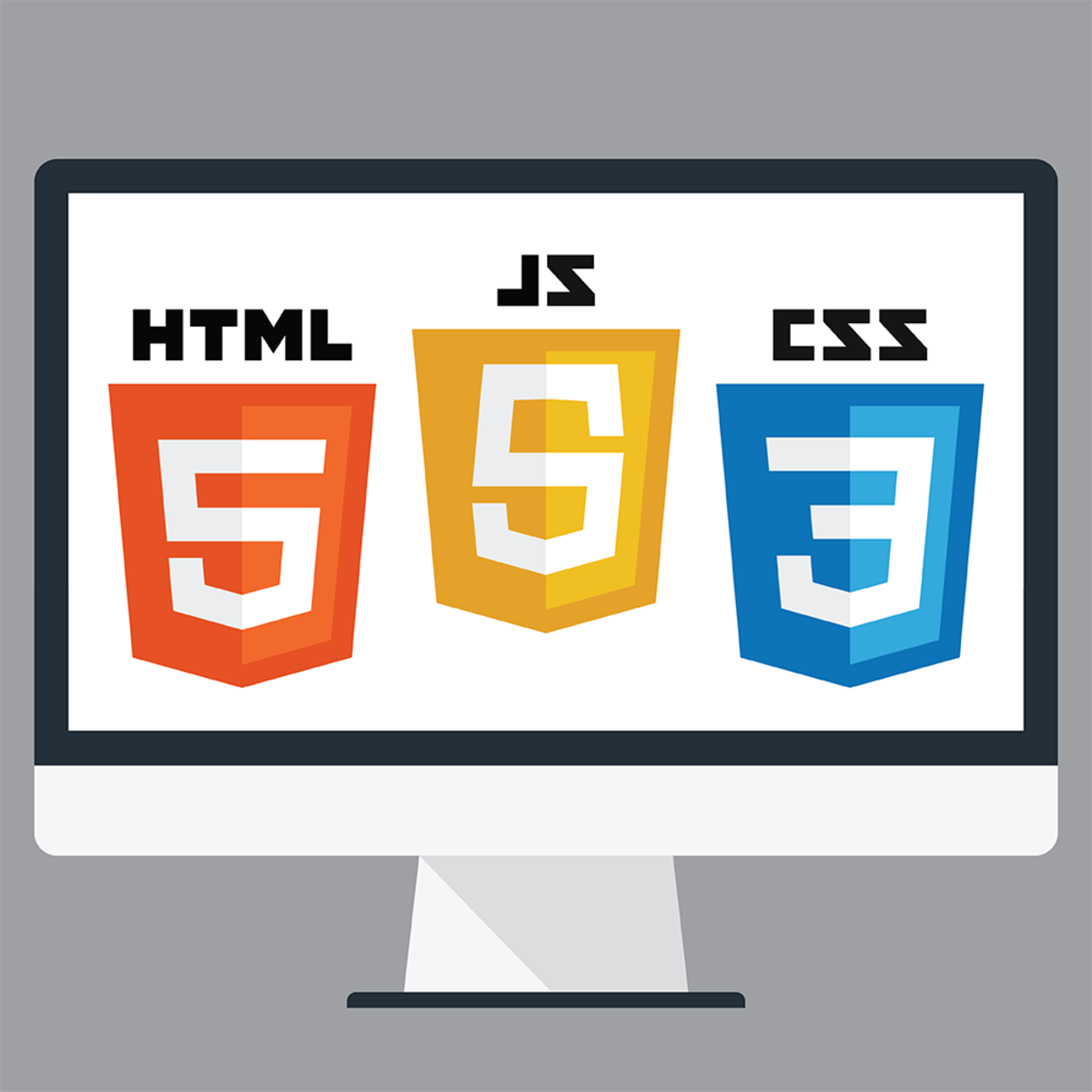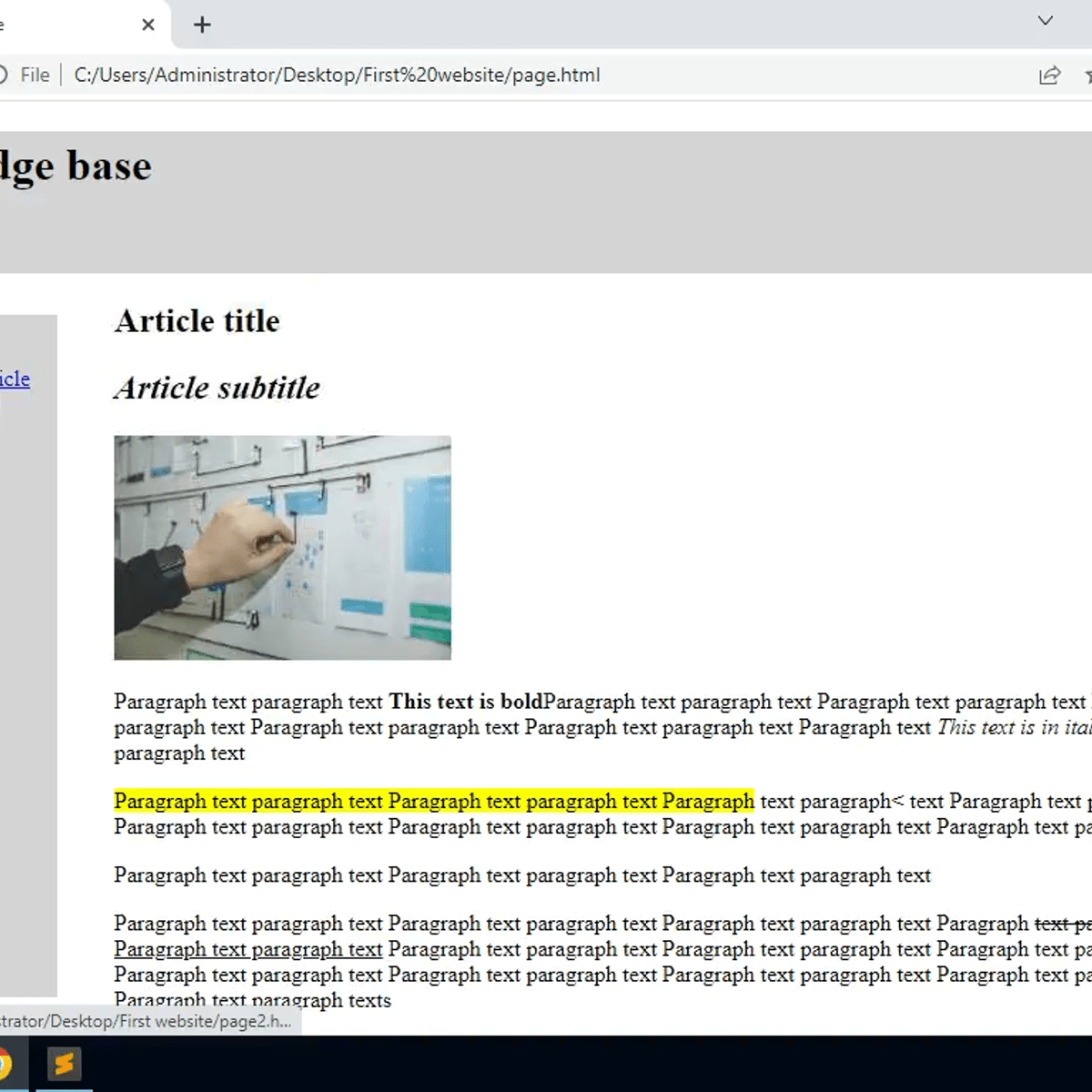Front-End Engineer
A Comprehensive Guide to Becoming a Front-End Engineer
Front-end engineering is the practice of building the parts of websites and web applications that users see and interact with directly. It's about translating design concepts into functional, responsive, and engaging user interfaces. If you've ever admired a website's smooth navigation, interactive elements, or beautiful layout, you've appreciated the work of a front-end engineer.
Working as a front-end engineer means being at the intersection of design and technology. You'll collaborate closely with designers to bring their visions to life and with back-end engineers to connect the user interface to the underlying data and logic. It's a dynamic field that constantly evolves with new tools, frameworks, and user expectations, offering continuous learning opportunities and the chance to create impactful digital experiences.
What Does a Front-End Engineer Do?
Front-end engineers are responsible for the client-side development of web applications. They craft the user interface and experience, ensuring that everything the user interacts with is functional, intuitive, and visually appealing across different devices and browsers.
Defining the Role
At its core, front-end engineering involves translating visual designs, often provided by UI/UX designers, into actual code that runs in a web browser. This requires a deep understanding of web technologies and how browsers interpret and display information. They focus on the 'look and feel' and the interactivity of a digital product.
This role requires both technical proficiency and a keen eye for design details. Front-end engineers must ensure that the application not only works correctly but also provides a seamless and enjoyable experience for the end-user. They are the bridge between the visual concept and the functional reality of a web application.
A key aspect is ensuring the application is accessible to all users, including those with disabilities. This involves implementing designs and code that adhere to accessibility standards, making the web usable for everyone.
Core Responsibilities
The daily tasks of a front-end engineer typically involve writing code using languages like HTML (HyperText Markup Language) for structure, CSS (Cascading Style Sheets) for styling and layout, and JavaScript for interactivity and dynamic content.
They implement responsive designs, ensuring websites adapt and function correctly on various screen sizes, from desktops to smartphones. Debugging issues across different browsers and devices is also a common responsibility, requiring meticulous testing and problem-solving skills.
Collaboration is crucial. Front-end engineers work with UI/UX designers to refine user interfaces, back-end engineers to integrate APIs and manage data flow, and quality assurance testers to identify and fix bugs. They also focus on optimizing website performance for speed and efficiency.
Relationship with Back-End and UX/UI
Front-end engineering is distinct from, yet closely related to, back-end engineering and User Experience (UX) / User Interface (UI) design. While front-end focuses on the client-side (what the user sees), back-end deals with the server-side (databases, server logic, APIs).
UX/UI designers create the blueprints and visual style guides, focusing on user research, information architecture, and visual aesthetics. Front-end engineers then take these designs and implement them using code, ensuring technical feasibility and interactivity.
Effective communication and collaboration among these roles are essential for building successful web applications. Front-end engineers often act as the crucial link, translating design requirements into technical implementation while coordinating with the back-end for data integration.
Key Skills and Tools for Front-End Engineers
Mastering a specific set of technical skills and tools is fundamental for anyone aspiring to become a front-end engineer. The landscape is constantly evolving, but certain core competencies remain essential.
Proficiency in HTML, CSS, and JavaScript
These three languages form the bedrock of front-end development. HTML provides the structure of web content, CSS controls its presentation and layout, and JavaScript enables interactivity and dynamic behavior.
Strong proficiency means not just knowing the syntax, but understanding semantic HTML for accessibility and SEO, mastering CSS concepts like the box model, flexbox, and grid, and writing efficient, maintainable JavaScript code. Familiarity with modern JavaScript features (ES6 and beyond) is crucial.
These foundational skills are non-negotiable and form the basis upon which other front-end technologies are built. Continuous practice and staying updated with the latest standards are key.
These courses provide a solid grounding in the essential web technologies, perfect for beginners or those needing a refresher.
For those looking to delve deeper into these core languages, these books offer comprehensive coverage and practical examples.
Frameworks and Libraries (React, Angular, Vue.js)
Modern front-end development heavily relies on JavaScript frameworks and libraries like React, Angular, and Vue.js. These tools provide pre-written code structures and components, streamlining development and enabling the creation of complex, single-page applications (SPAs).
ELI5: Frameworks vs. Libraries: Imagine building with LEGOs. A library (like React) is like getting a box of specialized LEGO pieces (e.g., wheels, windows) that you can use however you want within your own structure. A framework (like Angular) is more like getting a LEGO kit with instructions and a pre-defined structure (e.g., a spaceship kit) – it tells you how to put things together.
Choosing which framework to learn often depends on job market trends and project requirements. React is widely popular, particularly in startups and large tech companies. Angular, backed by Google, is common in enterprise environments. Vue.js is known for its gentle learning curve and flexibility.
Learning at least one major framework is essential for most front-end roles. Understanding their core concepts, such as component-based architecture, state management, and routing, is key.
These courses offer in-depth training on popular front-end frameworks, helping you build sophisticated web applications.
[course] Next.js From Scratch 2024Version Control Systems (Git)
Version control systems track changes to code over time, allowing developers to collaborate effectively, revert to previous versions, and manage different features simultaneously. Git is the industry standard.
Understanding Git commands (like commit, push, pull, branch, merge) and workflows (like Gitflow) is crucial for working in team environments. Platforms like GitHub, GitLab, and Bitbucket host Git repositories and provide additional collaboration features.
Proficiency in Git enables seamless collaboration, prevents code loss, and simplifies the process of managing complex projects with multiple contributors. It's a fundamental skill for any professional developer.
Cross-Browser Compatibility and Responsive Design
Websites must function correctly and look good across various web browsers (like Chrome, Firefox, Safari, Edge) and their different versions. Front-end engineers test and debug their code to ensure a consistent experience, handling browser-specific quirks.
Responsive web design ensures that layouts adapt fluidly to different screen sizes and orientations, providing an optimal viewing experience on desktops, tablets, and smartphones. This often involves using CSS techniques like media queries, flexible grids, and relative units.
Mastering these skills ensures that the applications you build reach the widest possible audience and provide a positive user experience regardless of the device or browser used.
These resources focus on creating designs that work well across all devices and browsers.
Formal Education Pathways
While not always strictly required, a formal education can provide a strong theoretical foundation and structured learning path for aspiring front-end engineers. University degrees often cover broader computer science principles alongside specific web technologies.
Relevant Undergraduate Degrees
Degrees in Computer Science (CS) are common pathways, providing a deep understanding of algorithms, data structures, software engineering principles, and programming fundamentals. While often more focused on back-end or systems-level programming, many CS programs offer web development specializations or electives.
Degrees in fields like Graphic Design, Interaction Design, or Human-Computer Interaction (HCI) can also be relevant. These programs emphasize user experience, visual design principles, and usability, providing a strong foundation for the design-oriented aspects of front-end development.
Some universities offer specialized degrees in Web Design and Development or Information Technology with a focus on web technologies, combining elements of both CS and design.
Coursework Alignment
Regardless of the specific degree, relevant coursework is key. Look for courses covering data structures, algorithms, object-oriented programming, database management, web programming (HTML, CSS, JavaScript), software engineering methodologies, and UI/UX design principles.
Courses focusing on specific front-end frameworks (React, Angular, Vue), mobile development, or advanced JavaScript concepts are particularly valuable. Project-based courses provide practical experience and portfolio pieces.
Supplementing required coursework with electives in graphic design, user psychology, or even communication can enhance a front-end engineer's skill set, improving collaboration and design sensibility.
Graduate Programs and Research
For those seeking deeper specialization or careers in research or academia, graduate programs (Master's or Ph.D.) in Computer Science or HCI offer advanced study. Specializations might include advanced web technologies, user interface optimization, accessibility research, or data visualization.
Research opportunities often exist within universities, focusing on areas like improving web performance, developing novel interaction techniques, studying user behavior, or advancing accessibility standards. A graduate degree can open doors to more specialized roles or leadership positions.
However, for most industry front-end roles, a graduate degree is not a prerequisite. Practical skills and a strong portfolio often carry more weight than advanced academic credentials.
Alternative Learning Pathways
The tech industry, particularly front-end development, is known for valuing demonstrable skills and practical experience, often above formal degrees. This opens up numerous alternative pathways for motivated individuals, including career changers and self-taught learners.
Embarking on a new career path can feel daunting, but the accessibility of learning resources for front-end development is a significant advantage. Remember that many successful engineers started through non-traditional routes. Stay persistent, focus on building tangible skills, and celebrate your progress along the way.
Self-Directed Project-Based Learning
One of the most effective ways to learn front-end development is by doing. Start with foundational concepts using online tutorials and documentation, then immediately apply them by building small projects. Gradually increase the complexity of your projects as your skills grow.
Build things you're interested in! Recreate a favorite website's layout, build a simple game, or create a tool to solve a personal problem. This intrinsic motivation fuels learning and results in portfolio pieces that showcase your passion and abilities.
Document your learning journey, perhaps through a blog or public code repositories. This reinforces your understanding and demonstrates your commitment to potential employers. Embrace challenges and learn from mistakes – debugging is a core part of development.
Online courses offer structured learning paths and practical exercises, ideal for self-directed study. OpenCourser aggregates thousands of courses, allowing you to browse programming courses and find options that fit your learning style and budget.
These courses are excellent starting points for building foundational skills through practical projects.
Certification Programs and Bootcamps
Coding bootcamps offer intensive, short-term training programs designed to equip students with job-ready skills quickly. They provide structured curricula, mentorship, and often career support services. Bootcamps can be a significant time and financial investment but offer an accelerated path into the industry.
Online certification programs, often offered through platforms featured on OpenCourser, provide specialized training in specific technologies or frameworks. Earning certificates can demonstrate proficiency in areas like React, Angular, web accessibility, or cloud platforms.
When choosing a bootcamp or certification, research their curriculum, instructor credentials, graduate outcomes, and reviews thoroughly. Consider whether the program aligns with your career goals and learning style. Remember that completion alone isn't enough; actively engaging and building projects is crucial.
Explore OpenCourser's Learner's Guide for tips on choosing the right program and making the most of online learning experiences.
Open-Source Contributions
Contributing to open-source projects is an excellent way to gain real-world experience, collaborate with other developers, and build your reputation. Find projects on platforms like GitHub that align with your interests and skill level.
Start small by fixing bugs, improving documentation, or adding simple features. This allows you to learn a project's codebase and contribution process. As you gain confidence, you can tackle more significant contributions.
Open-source involvement demonstrates initiative, collaboration skills, and technical ability to potential employers. It's a tangible way to showcase your skills beyond personal projects.
Portfolio Development Strategies
A strong portfolio is arguably the most crucial asset for a front-end engineer seeking employment. It's a curated collection of your best projects that demonstrates your skills, creativity, and problem-solving abilities.
Include a variety of projects showcasing different skills (e.g., responsive design, framework usage, API integration, animations). Quality over quantity is key – ensure each project is well-polished, functional, and has clean, readable code hosted publicly (e.g., on GitHub).
For each project, provide context: explain the purpose, the technologies used, your role (if collaborative), and the challenges you overcame. Consider creating a personal website to host your portfolio, showcasing your own design and development skills.
Tailor your portfolio to the types of roles you're applying for. If targeting e-commerce roles, include projects demonstrating relevant skills. Keep it updated with your latest and best work.
Career Progression and Opportunities
A career in front-end engineering offers diverse opportunities for growth, specialization, and transitions into related roles. The path typically involves gaining experience, deepening technical expertise, and potentially moving into leadership or specialized areas.
Entry-Level vs. Senior Positions
Entry-level roles (often titled Junior Front-End Developer or Web Developer) typically focus on implementing designs under supervision, fixing bugs, and learning established codebases and workflows. Mentorship from senior engineers is common.
As engineers gain experience (typically 3-5+ years), they progress to mid-level and senior roles. Senior Front-End Engineers take on more complex tasks, architect solutions, mentor junior developers, make technical decisions, and contribute to strategic planning. They possess deep expertise in frameworks, performance optimization, and best practices.
Progression often depends on demonstrating technical mastery, problem-solving ability, leadership potential, and a strong understanding of the broader software development lifecycle.
Specialization Paths
Front-end engineers can choose to specialize in specific areas. Accessibility (a11y) focuses on making web applications usable by people with disabilities, requiring knowledge of WCAG standards and assistive technologies.
Performance Optimization involves techniques to make websites load faster and run more smoothly, focusing on areas like code splitting, caching, and rendering strategies. UI/UX Engineering involves a deeper focus on implementing complex user interfaces, animations, and interactions, often working very closely with design teams.
Other specializations include front-end testing (frontend testing), design systems development, or expertise in specific frameworks or related technologies like WebGL for 3D graphics or WebAssembly.
These courses can help you explore specialization areas like accessibility and performance.
Transition to Full-Stack or Engineering Management
With experience, some front-end engineers expand their skills to become Full-Stack Developers, mastering both front-end and back-end technologies. This involves learning server-side languages (like Node.js, Python, Ruby), databases, and server infrastructure.
Others move into leadership roles like Tech Lead or Engineering Manager. These positions involve less hands-on coding and more focus on team management, project planning, architectural decisions, and mentoring other engineers.
Strong technical foundations combined with communication, leadership, and strategic thinking skills are necessary for these transitions. Some may also pivot into related fields like Product Management, leveraging their understanding of user experience and technical implementation.
Freelance vs. In-House Employment
Front-end engineers can work as full-time employees within companies (in-house) or as independent contractors (freelancers). In-house roles offer stability, benefits, and opportunities to work on long-term projects within a team.
Freelancing provides flexibility, autonomy, and the chance to work on diverse projects for various clients. However, it also requires business development skills (finding clients, negotiating contracts), self-discipline, and managing finances independently.
Many engineers transition between these models throughout their careers. Some start in-house to gain experience and build a network before venturing into freelancing, while others prefer the structure and collaborative environment of traditional employment.
This book offers guidance for those considering the freelance path.
Front-End Engineering in Global Markets
The demand for front-end engineers is a global phenomenon, driven by the increasing digitization of businesses and services worldwide. However, market conditions, salary expectations, and work trends can vary significantly by region.
Regional Demand Variations
Tech hubs in North America (e.g., Silicon Valley, Seattle, Toronto, New York), Western Europe (e.g., London, Berlin, Amsterdam), and parts of Asia (e.g., Singapore, Bangalore) typically exhibit high demand for skilled front-end developers. However, opportunities are growing rapidly in many other regions as well.
record:23i5qy
Factors influencing regional demand include the local tech industry's maturity, investment in startups, the presence of large technology companies, and government initiatives supporting digital transformation. Researching job boards specific to target regions can provide insights into local demand.
While major tech centers often offer higher salaries, the cost of living is also typically higher. Emerging tech hubs may offer competitive opportunities with a lower cost of living, making them attractive alternatives.
Remote Work Trends
The rise of remote work has significantly impacted the front-end development landscape. Many companies now hire globally, allowing engineers to work from anywhere. This broadens the talent pool for employers and increases opportunities for developers outside traditional tech hubs.
This trend offers greater flexibility but also requires strong communication skills, self-discipline, and the ability to collaborate effectively across time zones. Companies may adjust salaries based on the employee's location, even for remote roles.
The prevalence of remote work varies by company culture and industry. Some organizations embrace fully remote teams, while others prefer hybrid models or primarily in-office work. This flexibility remains a key factor in the tech job market.
Salary Benchmarks by Geography
Front-end developer salaries vary considerably worldwide. According to ZipRecruiter data as of March 2025, the average annual pay for a Front-End Developer in the United States is around $110,412, with ranges typically between $104,000 and $121,000, and top earners reaching over $141,500. However, salaries can be much higher in specific high-cost-of-living areas like California (average $107,914), Washington ($105,655), and New York.
In contrast, average salaries are different in other developed nations. For example, in Germany, the average is around €57,750 (approximately $63,000 USD as of early 2025), and in Canada, averages range roughly from CAD $50,000 to $62,000 (approximately $37,000 to $46,000 USD), depending on the specific city. Salaries in developing countries tend to be lower, reflecting differences in the cost of living and local market dynamics, though outsourcing can provide competitive rates.
Factors influencing salary include experience level, specific skill set (expertise in popular frameworks like React often commands higher pay), industry (Finance, Media, and Technology often pay more), company size, and geographic location. Resources like Glassdoor, Payscale, ZipRecruiter, and Built In provide region-specific salary data.
Cultural Considerations in UI Development
When developing applications for a global audience, front-end engineers must consider cultural nuances in UI design. Colors, symbols, imagery, and even layout conventions can have different meanings and preferences across cultures.
Localization (adapting language, date formats, currencies) and internationalization (designing applications to be easily adaptable) are key technical considerations. Understanding user expectations and interaction patterns in different cultural contexts is crucial for creating effective global products.
This requires sensitivity, research, and often collaboration with local experts or user testing in target markets. Building inclusive and culturally appropriate interfaces enhances user adoption and satisfaction worldwide.
Ethical Considerations in Front-End Development
Front-end engineers hold significant responsibility as they build the interfaces through which users interact with technology. Ethical considerations are paramount, ensuring applications are fair, accessible, respectful of privacy, and avoid manipulative practices.
Accessibility Standards (WCAG)
Web accessibility ensures that people with disabilities can perceive, understand, navigate, and interact with the web. The Web Content Accessibility Guidelines (WCAG), developed by the World Wide Web Consortium (W3C), provide the international standard.
WCAG is built on four principles (POUR): Content must be Perceivable, Operable, Understandable, and Robust. Each principle has specific guidelines and testable success criteria at three conformance levels (A, AA, AAA).
Front-end engineers must implement HTML semantics correctly, provide text alternatives for images, ensure keyboard navigation, manage focus, use sufficient color contrast, and test with assistive technologies. Adhering to WCAG (often level AA) is not just ethical but often a legal requirement.
This course provides a crucial introduction to web accessibility principles and practices.
Dark Patterns and User Manipulation
Dark patterns are UI designs crafted to trick users into doing things they might not otherwise do, such as signing up for recurring subscriptions unintentionally, making it difficult to cancel services, or misleading users about prices.
Examples include hidden costs, confusing navigation to prevent unsubscribing, pre-selected checkboxes for optional items, and using shame or urgency tactics (e.g., "No, I don't want to save money").
Front-end engineers have an ethical obligation to avoid implementing such patterns, even if requested. Prioritizing transparent, honest, and user-respecting design builds trust and long-term value, contrasting with the short-term gains potentially offered by manipulative tactics.
Data Privacy in Client-Side Implementations
Front-end code runs in the user's browser, handling user inputs and sometimes managing sensitive information before it's sent to the server. Engineers must be mindful of data privacy regulations like GDPR and CCPA.
This includes securing user inputs, avoiding unnecessary collection or storage of personal data on the client-side, being transparent about data usage (e.g., cookie consent banners), and ensuring secure communication with back-end services (using HTTPS).
Careless handling of data in the front-end can lead to security vulnerabilities (like Cross-Site Scripting - XSS) and privacy breaches. Understanding security best practices is an ethical and technical necessity.
This book covers security aspects relevant to web applications.
Sustainable Coding Practices
Digital technologies consume significant energy. Sustainable coding, or green coding, involves writing efficient code and optimizing applications to minimize their environmental impact. This includes reducing data transfer sizes, optimizing images, minimizing computationally intensive JavaScript, and efficient server communication.
While often overlooked, front-end choices directly impact energy consumption on both user devices and servers. Practices like efficient algorithms, lazy loading, and utilizing performant frameworks contribute to sustainability.
Adopting these practices aligns with broader environmental responsibility and can also lead to faster, more efficient applications, improving the user experience.
Emerging Trends and Future Outlook
The field of front-end engineering is in constant flux, driven by technological advancements, evolving user expectations, and the integration of new paradigms like artificial intelligence. Staying abreast of these trends is crucial for career longevity.
WebAssembly and Next-Gen Frameworks
WebAssembly (Wasm) allows code written in languages other than JavaScript (like Rust, C++, Go) to run in the browser at near-native speed. This opens possibilities for performance-intensive web applications, such as games, video editing software, and complex simulations.
New frameworks and libraries continually emerge, often focusing on performance, developer experience, or specific use cases (e.g., server components in React/Next.js, advancements in Svelte or SolidJS). Server-Side Rendering (SSR) and Static Site Generation (SSG) continue to evolve for better performance and SEO.
Keeping an eye on these developments helps engineers choose the right tools and techniques for future projects. Understanding the underlying principles allows for quicker adaptation to new technologies.
AI-Assisted Development Tools
Artificial Intelligence (AI) is increasingly integrated into development workflows. Tools like GitHub Copilot, ChatGPT, and others assist with code generation, debugging, refactoring, and even translating design mockups into code snippets.
AI is generally seen as an amplifier of developer capabilities rather than a replacement. It automates repetitive tasks, allowing engineers to focus on more complex problem-solving, architecture, and creative aspects. According to some analyses, AI can enhance efficiency and potentially reduce development costs.
Learning to effectively use AI tools (e.g., prompt engineering) is becoming a valuable skill. However, critical oversight remains essential, as AI-generated code requires validation for correctness, security, and adherence to best practices.
AR/VR Interface Challenges
As Augmented Reality (AR) and Virtual Reality (VR) technologies mature, the demand for web-based immersive experiences grows. Developing interfaces for AR/VR presents unique challenges for front-end engineers.
This involves working with 3D graphics libraries (like Three.js, Babylon.js), understanding spatial interfaces, managing performance on diverse hardware, and creating intuitive interactions in non-traditional environments. WebXR APIs provide the foundation for building these experiences in the browser.
While still a niche area, the skills required for developing web-based AR/VR interfaces represent a potential future specialization for front-end engineers.
Impact of No-Code/Low-Code Platforms
No-code and low-code platforms allow users to build websites and applications with minimal or no traditional coding, often using visual interfaces and drag-and-drop components. These tools are empowering non-developers to create digital products.
While these platforms handle simpler use cases, they don't eliminate the need for front-end engineers. Complex applications, custom features, performance optimization, and deep integrations still require specialized coding skills.
The trend may shift the focus of front-end roles towards more complex, bespoke development tasks that these platforms cannot handle. Some engineers might also find opportunities in developing components or extensions for these platforms.
Frequently Asked Questions
Navigating a career in front-end engineering often brings up common questions. Here are answers to some frequently asked questions.
Is a computer science degree required?
No, a traditional Computer Science degree is not strictly required to become a front-end engineer. While a degree provides a strong theoretical foundation, many successful engineers are self-taught or come from coding bootcamps or related design fields.
What matters most to employers is demonstrable skill and a strong portfolio showcasing your ability to build functional, well-designed web applications. Practical experience, whether through personal projects, open-source contributions, or internships, is highly valued.
However, a CS degree can be advantageous, particularly for understanding deeper computer science concepts that underpin web technologies and potentially for certain roles in large, established companies.
How competitive is the job market?
The job market for front-end developers remains generally strong, with the U.S. Bureau of Labor Statistics projecting faster-than-average growth for web developers and digital designers through 2033. Demand is driven by the ongoing need for businesses to establish and enhance their online presence.
However, the market can be competitive, especially for entry-level positions. There is a large supply of aspiring developers, particularly those graduating from bootcamps. Standing out requires a solid portfolio, strong foundational skills, and proficiency in modern frameworks.
Specializing in high-demand areas like specific frameworks (React, Angular), accessibility, or performance optimization can improve competitiveness. Networking and continuous learning are also crucial.
What's the earning potential?
Earning potential for front-end engineers varies significantly based on experience, location, skills, industry, and company size. In the US, average annual salaries reported by sources like ZipRecruiter and Built In hover around $110,000 as of early 2025, but ranges are wide ($42,500 to over $155,500).
Entry-level salaries might range from $65,000 to $78,000, while senior engineers can earn well over $120,000, sometimes exceeding $150,000, especially in major tech hubs like San Francisco or New York. Top earners often possess specialized skills or hold leadership roles.
Salaries in other countries vary based on local market conditions and cost of living. Industries like finance and technology often offer higher compensation compared to others.
How to stay updated with rapid tech changes?
The front-end landscape evolves quickly. Staying updated requires a commitment to continuous learning. Follow influential developers and organizations on social media (like X/Twitter) and tech blogs.
Subscribe to newsletters (e.g., JavaScript Weekly, Frontend Focus), listen to podcasts, and read documentation for new releases of frameworks and tools. Experiment with new technologies through small personal projects.
Participate in online communities (like Stack Overflow, Dev.to, Reddit forums), attend virtual or local meetups and conferences, and consider taking short online courses on emerging topics. Browsing courses on OpenCourser can help identify trending skills.
This course can help you prepare for the technical interview process, which often tests up-to-date knowledge.
Can front-end engineers transition to product management?
Yes, transitioning from front-end engineering to product management is a common and viable career path. Front-end engineers develop a deep understanding of user experience, technical feasibility, and the development process – all valuable assets for a Product Manager.
This transition often requires developing additional skills in areas like market research, business strategy, user research methodologies, data analysis, and stakeholder communication.
Engineers interested in this path can start by taking on more product-focused responsibilities within their teams, collaborating closely with existing product managers, and potentially pursuing relevant certifications or courses in product management.
Impact of AI on front-end roles?
AI is poised to significantly impact front-end development, primarily through automation and assistance tools. AI can generate code, suggest improvements, automate testing, and even create basic layouts from prompts or designs.
Most experts believe AI will augment, not replace, front-end developers. It will likely handle more routine and repetitive tasks, freeing up engineers to focus on complex problem-solving, creative UI/UX implementation, architectural design, and ensuring quality and accessibility – tasks requiring human judgment and creativity.
Developers who learn to leverage AI tools effectively will likely become more productive and valuable. The emphasis may shift slightly towards skills like critical thinking, system design, prompt engineering, and validating AI-generated output.
Helpful Resources
Here are some links to useful resources mentioned throughout this article and other helpful starting points:
- OpenCourser Home: Search over 50,000 online courses and 150,000 books.
- OpenCourser - Programming Courses: Browse courses specifically related to programming.
- OpenCourser - Design Courses: Explore courses in UI/UX and graphic design.
- OpenCourser Learner's Guide: Find articles on effective online learning, career building, and using certificates.
- W3C Web Content Accessibility Guidelines (WCAG): The official standards for web accessibility.
- MDN Web Docs: Comprehensive documentation for web technologies (HTML, CSS, JavaScript).
- CSS-Tricks: Articles, tutorials, and resources focused on CSS and front-end development.
- Stack Overflow: A large community for asking and answering programming questions.
Embarking on a career as a Front-End Engineer is a challenging yet rewarding journey. It requires a blend of technical skill, design sensibility, and a commitment to continuous learning. Whether you pursue a formal degree or forge your own path through online resources and projects, the key lies in building a strong foundation, creating a compelling portfolio, and staying curious in this ever-evolving field. With dedication and persistence, you can build a fulfilling career crafting the digital experiences of tomorrow.






























